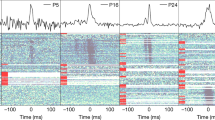Play all audios:

ABSTRACT The radio galaxy B2 1141 + 37 is remarkable for both its radio and optical properties. The radio source has a double structure for which the ratio of the separation between the
components to their dimension is exceptionally large. Moreover, our recent measurement of the redshift gives _z_ = 0.115 giving a separation between the components of 1.0 Mpc. This makes
1141 + 37 one of the largest radio structures known. The optical identification which has been proposed is a tight chain of galaxies which are probably gravitationally bound. If this is the
case, the radio galaxy must have some precession and/or rotation motion around the centre of mass of the group with important consequences on the structure and evolution of the radio source.
We report here on the redshift measurement and on some VLA observations at 4.9 GHz. Access through your institution Buy or subscribe This is a preview of subscription content, access via
your institution ACCESS OPTIONS Access through your institution Subscribe to this journal Receive 51 print issues and online access $199.00 per year only $3.90 per issue Learn more Buy this
article * Purchase on SpringerLink * Instant access to full article PDF Buy now Prices may be subject to local taxes which are calculated during checkout ADDITIONAL ACCESS OPTIONS: * Log in
* Learn about institutional subscriptions * Read our FAQs * Contact customer support SIMILAR CONTENT BEING VIEWED BY OTHERS A REPEATING FAST RADIO BURST ASSOCIATED WITH A PERSISTENT RADIO
SOURCE Article Open access 08 June 2022 DETECTION OF TWO BRIGHT RADIO BURSTS FROM MAGNETAR SGR 1935 + 2154 Article 16 November 2020 ON THE DETECTION OF A COSMIC DAWN SIGNAL IN THE RADIO
BACKGROUND Article 28 February 2022 REFERENCES * Meier, D. L., Ulrich, M. H., Fanti, R., Gioia, I. & Lari, C. _Astrophys. J._ 229, 25 (1979). Article ADS Google Scholar * Fanti, R.,
Gioia, I., Lari, C. & Ulrich, M. H. _Astr. Astrophys. Suppl._ 34, 341 (1978). ADS Google Scholar * Meier, D. L. & Ulrich, M. H. (in preparation). * McDonald, G. H., Kenderdine, S.
& Neville, A. C. _Mon. Not. R. astr. Soc._ 138, 259 (1968). Article ADS Google Scholar * Willis, A. G., Strom, R. G. & Wilson, A. S. _Nature_ 250, 625 (1974). Article ADS Google
Scholar * Hargrave, P. J. & Ryle, M. _Mon. Not. R. astr. Soc._ 166, 305 (1974). Article ADS Google Scholar * Gioia, I. M. & Gregorini, L. _Astr. Astrophys. Suppl._ 36, 347
(1979). ADS Google Scholar Download references AUTHOR INFORMATION AUTHORS AND AFFILIATIONS * European Southern Observatory, Karl-Schwarzschilde-Strasse 2, D-8046, Garching bei München, FRG
M. H. Ulrich * Kitt Peak National Observatory, Tucson, Arizona, 85726 H. Butcher * Jet Propulsion Laboratory, Pasadena, California, 91103 D. L. Meier Authors * M. H. Ulrich View author
publications You can also search for this author inPubMed Google Scholar * H. Butcher View author publications You can also search for this author inPubMed Google Scholar * D. L. Meier View
author publications You can also search for this author inPubMed Google Scholar RIGHTS AND PERMISSIONS Reprints and permissions ABOUT THIS ARTICLE CITE THIS ARTICLE Ulrich, M., Butcher, H.
& Meier, D. B2 1141 + 37: a giant radio galaxy with remarkable radio and optical properties. _Nature_ 288, 459–461 (1980). https://doi.org/10.1038/288459a0 Download citation * Received:
11 August 1980 * Accepted: 11 September 1980 * Issue Date: 04 December 1980 * DOI: https://doi.org/10.1038/288459a0 SHARE THIS ARTICLE Anyone you share the following link with will be able
to read this content: Get shareable link Sorry, a shareable link is not currently available for this article. Copy to clipboard Provided by the Springer Nature SharedIt content-sharing
initiative
